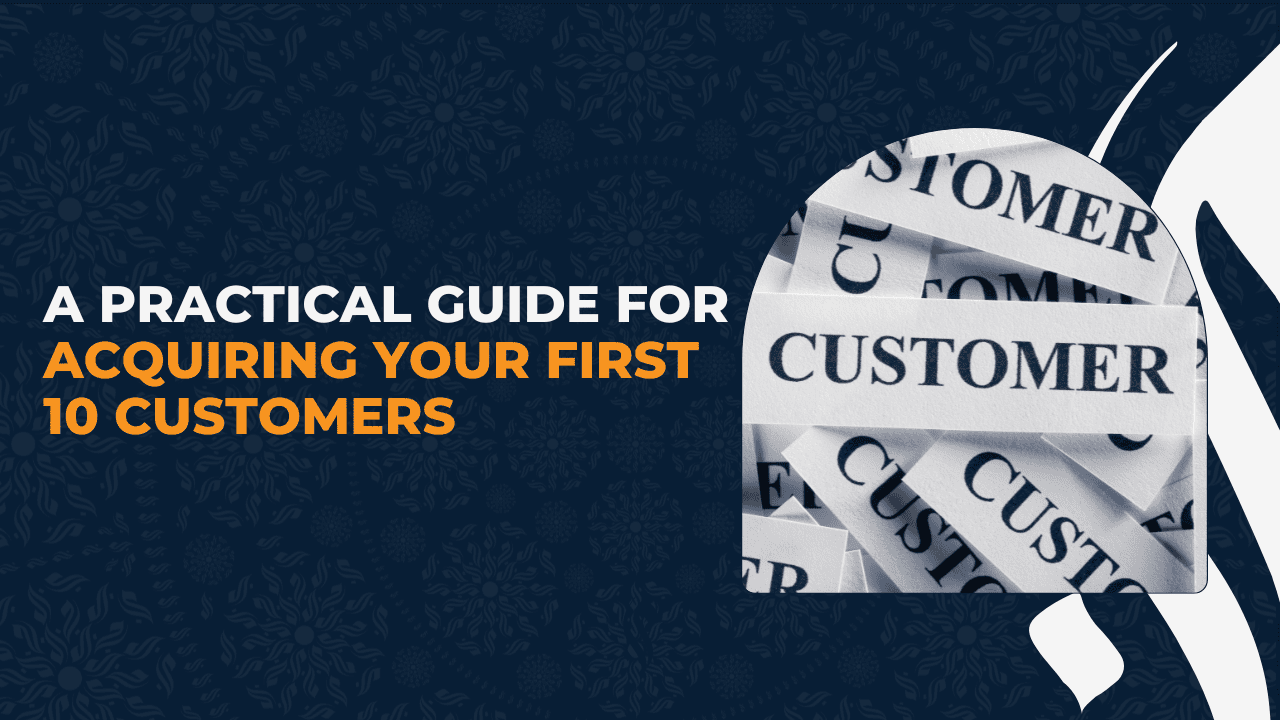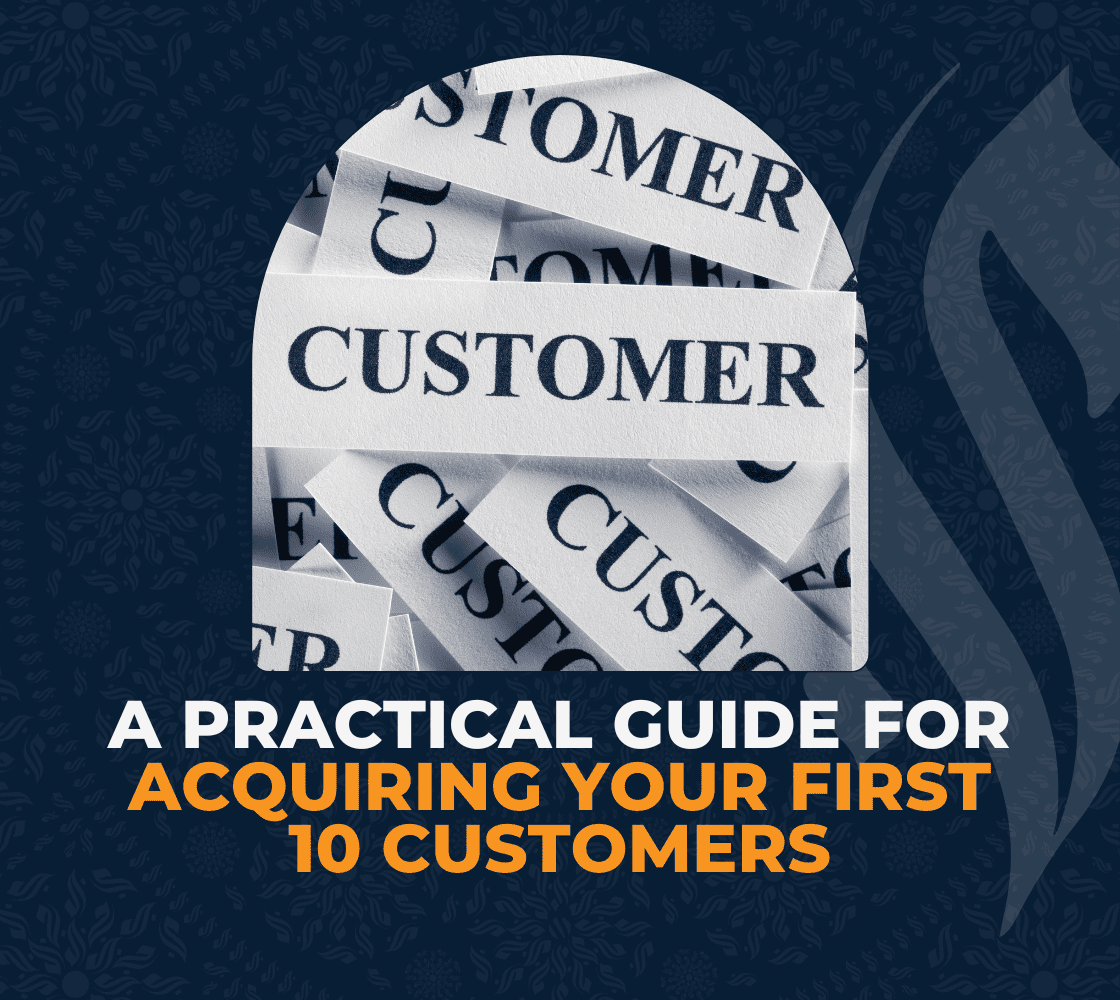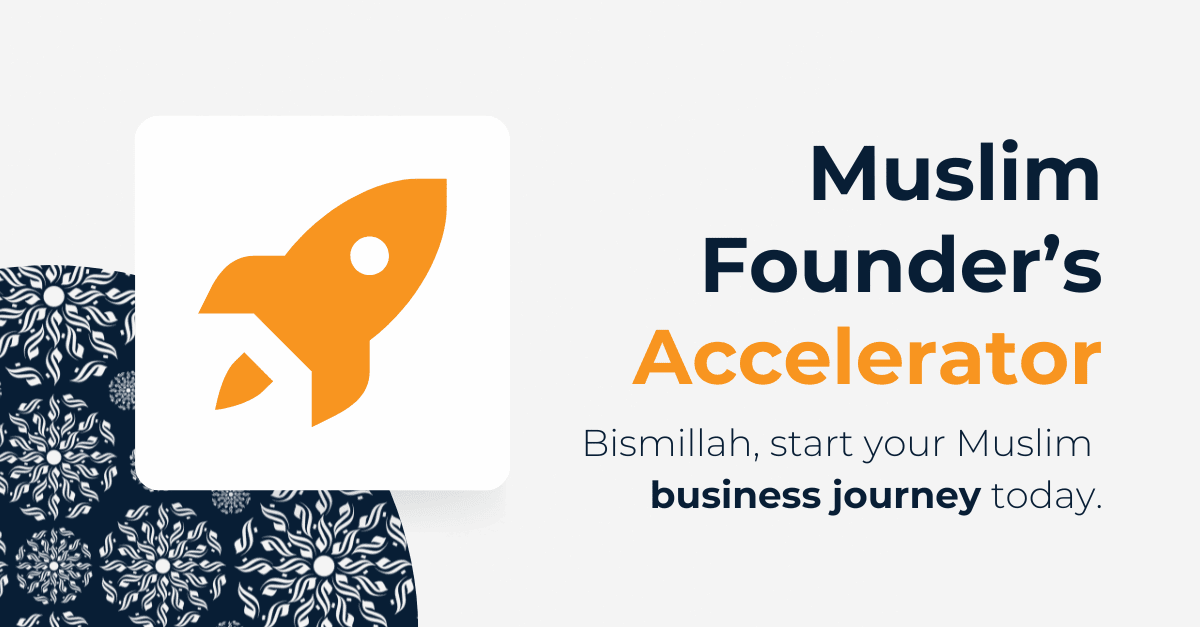

For every new founder, the first big challenge isn't scaling, it's starting. Getting your first 10 paying customers can feel like the hardest part of the journey, but it's also the most powerful. These early customers are your test bed, your referral source, and often, your biggest supporters.
If you can land 10, you can land 100. This guide breaks the process into practical, actionable steps, built for real-world execution, not just theory.
Define Your Customer
Clarity is your most powerful tool in the early stage. Without knowing who your product is for, it's impossible to craft a message that resonates or a solution that delivers.
Start by Sketching a Basic Persona
- Demographics: What's their age, location, profession, or income level?
- Pain Points: What specific challenge or frustration are they facing?
- Goals and Motivations: What do they want to achieve? What values shape their decisions?
Avoid vague audiences like "everyone", "small business owners" or "kids." The narrower your focus, the sharper your pitch, and the easier it becomes to find the right people.
Example: Instead of "freelancers," say "first-year freelance designers in their 20s looking to land better-paying clients."
This simple exercise aligns your product, message, and outreach channels around the person who actually needs what you offer.
Tap Your Network
Your existing network is your warmest audience. These people already trust you, or know someone who does. That makes them far more likely to try your offer or refer you to someone who will.
Here's How to Approach This Step:
- Make a list of 30 to 50 people you've worked with, studied with, or helped in the past.
- Reach out directly, letting them know what you're launching and who it's for.
- Be specific in your ask, for example, "Do you know anyone who's struggling with [problem] and might benefit from this?"
You can also create a small "friends and family" offer with a discount or bonus to reduce risk and increase urgency.
This isn't about begging for support, it's about making it easy for people to help you. When they understand your mission and target, introductions flow more naturally.
Craft a Powerful Offer
Craft a Powerful Offer
A strong offer doesn’t mean a complicated one. In fact, simple and specific usually wins. Your early-stage buyers need to clearly understand what they’re getting and why it matters now.
Refine your offer by focusing on:
- The key result: What’s the one thing they’ll achieve by working with you?
- Simplicity in pricing: Use one clear package or price. Avoid too many choices early on.
- Urgency: Add a time-based or quantity-based incentive like “5 early-access spots left” or “beta pricing until June 30.”
Example: “Get a done-for-you website in 2 weeks, tailored for first-time coaches. Only 3 beta clients accepted.”
That kind of clarity cuts through hesitation and drives decision
Subscribe to Muslim Founder's Newsletter
The only newsletter you need to start & grow your Muslim business, Insha'Allah.
100% Free. No Spam Guaranteed.
Targeted Outreach
Targeted Outreach
Cold outreach gets a bad reputation because most of it is done poorly, generic, spammy, and too long. But personalized, respectful outreach can work extremely well when you've already defined your audience and offer.
Focus on Quality Over Quantity:
- Send short messages via email or direct message /DM to people who fit your target persona.
- Start with relevance, for example, "Saw your recent post about struggling to convert leads, I help with that."
- Use a simple structure: One pain point, one solution, one next step.
Don't overwhelm them with too much information. The goal isn't to close a deal on first contact, it's to spark interest and start a conversation.
No matter how well you prepare, your offer is just a hypothesis until someone uses it. That’s why early feedback is gold. It helps you improve the experience before you scale.
What to do:
- After delivering your product or service, ask specific questions: “Was anything confusing?”, “What would you change?”, “What result did you get?”
- Track repeat patterns: If 3 people hesitate at your price or ask the same question, address it.
- Use these insights to improve your messaging, onboarding, or offer format.
This process doesn’t stop after 10 customers, but it’s especially important early on. Iterate quickly based on real data, not assumptions.
Offer Early Incentives
Incentives are not bribes; they are bridges. They help reduce friction and reward action. In the early stages, they also add a sense of exclusivity and appreciation.
Examples of Effective Incentives:
- A discounted "Early bird pricing" for your first five customers.
- A free bonus module, upgrade, or consultation.
- Exclusive access to a future product or community.
The best incentives feel valuable to them, but cost little for you to deliver. Just be sure to position them as part of your limited early rollout, not as a sign of low value.
Build Real Relationships
Getting a customer is just the beginning. Retaining them and turning them into advocates takes real, human connection, especially with your first 10.
Ways to Do This Well:
- Follow up personally: A quick message to ask how they're doing can go a long way.
- Share useful resources, even if unrelated to your offer.
- Celebrate their wins: If their business grows after working with you, cheer them on.
- Use personal touches: A handwritten thank-you card or voice note is memorable.
You're not just building a business, you're building reputation, trust, and community.
Turn Buyers into Advocates
Turn Buyers into Advocates
Happy customers will naturally share your work, but you can make it easier, and more rewarding.
Ways to Encourage Advocacy:
- Ask for referrals, but make it easy, for example, "If you know someone like you who'd benefit, I'd love an intro."
- Offer testimonials or case study templates so it's quick for them to write something.
- Create a simple referral program, for example, "Send a friend, get 20% off your next purchase."
Don't underestimate the power of a short success story. One great testimonial often does more than any sales page.
Conclusion
Acquiring your first 10 customers isn't about flashy growth hacks. It's about consistency, clarity, and care.
- Define exactly who you help.
- Make your message clear and timely.
- Reach out personally and professionally.
- Listen, improve, and show up for your early users.
These first 10 will shape everything that comes next. Get them right, and you won't just get traction, you'll build trust, momentum, and a brand that grows with purpose.
Subscribe to Muslim Founder's Newsletter
The only newsletter you need to start & grow your Muslim business, Insha'Allah.
100% Free. No Spam Guaranteed.

